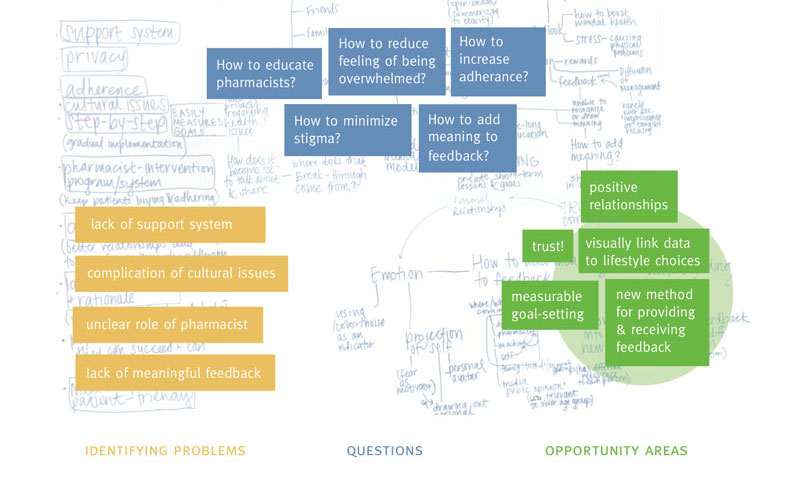Service design to increase diabetes treatment adherence in Taiwan
Maywufa Pharmacies, Institute for Information Industry
- Held qualitative user and expert interviews
- Contextual inquiry in stores
- Uncovered balance of trust in eastern and western medicine
- Created service blueprints and motion graphic video to communicate our service
- Led user centered design workshops at the Institute for Information Industry, a national research institute
Maywufa pharmacies recognized that type II diabetes cases were rising at an alarming rate in their country. However, the cost and complexity of western treatment methods were clashing with their patients' eastern medicine foundations and it was proving detrimental to their ability to stay on a treatment plan. A colleague and I traveled to Taiwan for two months to design an in–store service for diabetic patient care with the goal of increasing adherence to help patients meet their healthcare needs and increase the pharmacy's bottom line.

We visited stores in three major cities across the island country to interview patients and pharmacists about their experience with the current service and gain an understanding for pain points in the process. We examined store layouts, product placement, cost of goods, and more as part of our contextual inquiry. We found an interesting balance between trust in eastern and western medicine in modern taiwanese culture that often led people to blend treatment plans to the detriment of both plans, for example, not testing their blood sugar if they felt ok or replacing fundamentals like insulin therapy with an eastern treatment.

Helped get our bearings in the problem space
Trust was a key issue in Taiwanese medicine and pharmacists that we specifically designed for. Through the use of regular patient consultations and keeping a patient database, the pharmacy would be able to keep in contact with their patients and alert them when they were due for a check–in. That way, the pharmacy would exist between the worlds of the sometimes impersonal western medicine and the holistic eastern style of medicine.
Key to the service we designed is offering a free test and consultation with a pharmacist as a pre–emptive measure to identify warning signs of the onset of type II diabetes and refer people to a doctor. The pharmacy would build trust through personal relationships with patients and, in the event that a patient would be diagnosed with diabetes, Maywufa would be more likely than competitors to attract their business for the duration of their treatment.

From our research we found that there is no one–size–fits–all solution to diabetes care, that many people use testing supplies and pharmacist advice in different ways. We designed a service that could adapt to different users — low income, home–bound, a family plan, and an individual plan — with the hope of increasing adherence.
To conceptualize and communicate our design we built service blueprints, created patient profiles, and storyboarded customer journeys. I created four motion graphic videos to illustrate patient journeys through different parts of our proposed service to highlight it's flexibility in letting patients make it their own choices for care.
As part of our work in Taiwan, my colleague and I aided the professor we were working with while he gave service design workshops at the Institute for Information Industry, a national research institute affiliated with the Living Lab. I led two of these sessions with my colleague, and presented our work as an example of how III could incorporate user–centered design methods into their workflow. ❦


